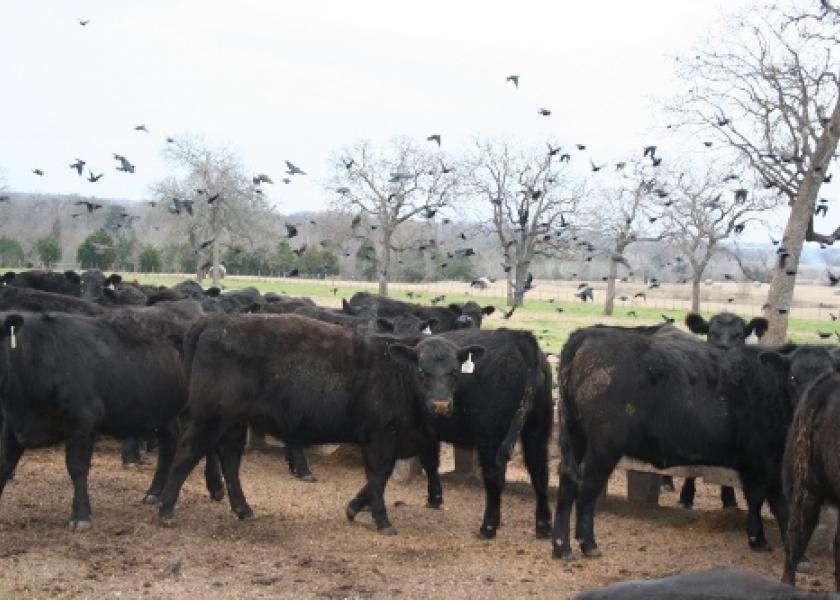USDA Team Honored for Bird and Mammal Repellents

On August 29, the U.S. Department of Agriculture’s (USDA) National Wildlife Research Center (NWRC) received the Federal Laboratory Consortium (FLC) Mid-Continent Region’s 2018 Regional Partnership Award for its role in the development of bird and mammal repellents to protect agricultural crops and property. The award was presented at a reception during the FLC Mid-Continent Regional Meeting held at the Skirvin Hilton Hotel in Oklahoma City, Oklahoma. The award recognizes Federal laboratories that have accomplished outstanding work in the process of partnering and transferring a technology to the commercial marketplace. The NWRC is one of more than 100 Federal laboratories from 14 states comprising the Mid-Continent Region.
"We are honored that the Federal Laboratory Consortium is recognizing our scientists’ and private partners’ efforts to provide nonlethal repellents and repellent application strategies for managing bird and mammal damage," said NWRC Director Larry Clark. “This technology not only aids in wildlife conservation and crop and disease protection in the United States, but also food production in lesser developed countries.”
The idea was first conceived in the early 1990s when NWRC researchers entered into a series of cooperative agreements with Arkion Life Science LLC— a private firm in Delaware— to develop bird repellent products based on a naturally-occurring, plant-based compound called anthraquinone (AQ). AQ was first patented as a bird repellent in 1944 to reduce bird damage to agricultural crops. At that time, the assumed mode of action was post-ingestive stress (e.g., an unpleasant taste or sickness in the birds that eat it). Recent NWRC-Arkion research has shown that AQ can also cause avoidance behaviors in birds and mammals through visual cues related to the compound’s absorption of the ultraviolet (UV) spectrum. As a consequence, repellent products and application strategies have been designed that ‘trick’ birds and mammals into overlooking food items or deter them from sitting or perching on items. NWRC research has also shown that if birds first come into contact with AQ, other less expensive compounds with similar UV spectral characteristics can be substituted for AQ or subsequent applications of AQ can be made at lower application rates.
The NWRC-Arkion collaboration has led to five patents being issued or under review by the U.S. Patent and Trade Office, as well as foreign governments. Arkion has since been issued an exclusive license to the visual cue technology.
Future NWRC-Arkion research efforts are focused on developing AQ-based products intended for foliar applications to crops; topical application to fruit and nut trees; structural applications in poultry, beef and dairy facilities; and incorporated or topical applications to rodenticide baits. Applications of this repellent technology are expected to increase throughout the U.S. and internationally, saving farmers money and helping to protect a wide variety of resources.
To learn more about the NWRC repellent research, please visit the NWRC Repellent Project webpage.
The FLC is the nationwide network of federal laboratories that provides the forum to develop strategies and opportunities for linking laboratory mission technologies and expertise with the marketplace. In consonance with the Federal Technology Transfer Act of 1986 and related federal policy, the mission of the FLC is to promote and facilitate the rapid movement of federal laboratory research results and technologies into the mainstream of the U.S. economy. Today, approximately 300 federal laboratories and centers and their parent departments and agencies are FLC members.
NWRC is the research arm of the USDA Animal and Plant Health Inspection Service’s Wildlife Service program. It applies scientific expertise to resolve human-wildlife conflicts while maintaining the quality of the environment shared with wildlife. NWRC develops methods and information to address human-wildlife conflicts related to agriculture; human health and safety; property damage; invasive species and threatened and endangered species. To learn more about NWRC, visit their website at https://www.aphis.usda.gov/aphis/ourfocus/wildlifedamage/programs/nwrc.







